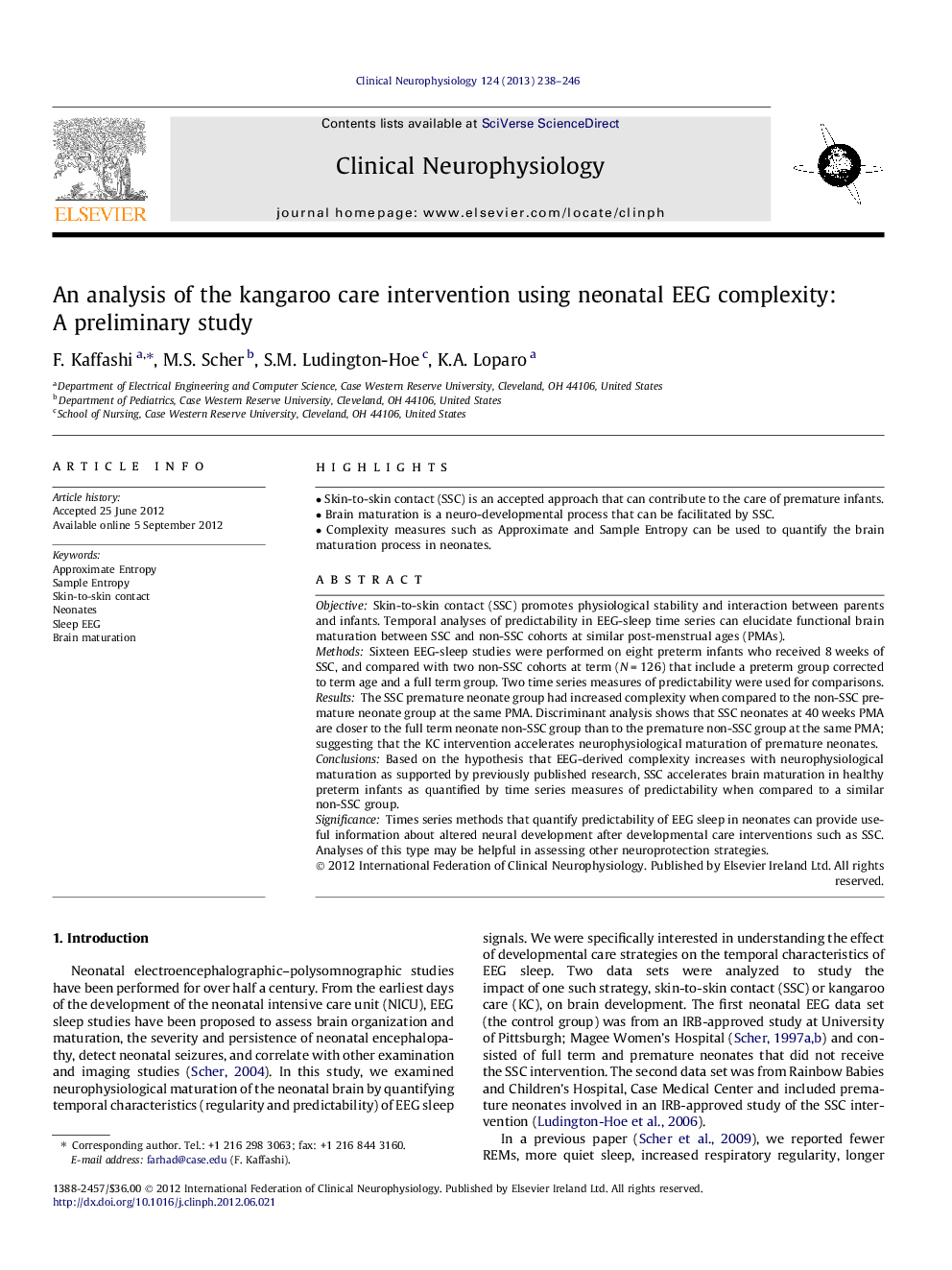| Article ID | Journal | Published Year | Pages | File Type |
|---|---|---|---|---|
| 3044605 | Clinical Neurophysiology | 2013 | 9 Pages |
ObjectiveSkin-to-skin contact (SSC) promotes physiological stability and interaction between parents and infants. Temporal analyses of predictability in EEG-sleep time series can elucidate functional brain maturation between SSC and non-SSC cohorts at similar post-menstrual ages (PMAs).MethodsSixteen EEG-sleep studies were performed on eight preterm infants who received 8 weeks of SSC, and compared with two non-SSC cohorts at term (N = 126) that include a preterm group corrected to term age and a full term group. Two time series measures of predictability were used for comparisons.ResultsThe SSC premature neonate group had increased complexity when compared to the non-SSC premature neonate group at the same PMA. Discriminant analysis shows that SSC neonates at 40 weeks PMA are closer to the full term neonate non-SSC group than to the premature non-SSC group at the same PMA; suggesting that the KC intervention accelerates neurophysiological maturation of premature neonates.ConclusionsBased on the hypothesis that EEG-derived complexity increases with neurophysiological maturation as supported by previously published research, SSC accelerates brain maturation in healthy preterm infants as quantified by time series measures of predictability when compared to a similar non-SSC group.SignificanceTimes series methods that quantify predictability of EEG sleep in neonates can provide useful information about altered neural development after developmental care interventions such as SSC. Analyses of this type may be helpful in assessing other neuroprotection strategies.
► Skin-to-skin contact (SSC) is an accepted approach that can contribute to the care of premature infants. ► Brain maturation is a neuro-developmental process that can be facilitated by SSC. ► Complexity measures such as Approximate and Sample Entropy can be used to quantify the brain maturation process in neonates.
